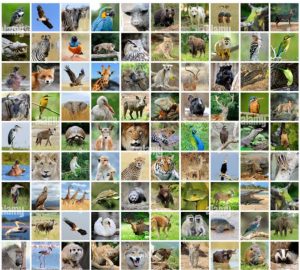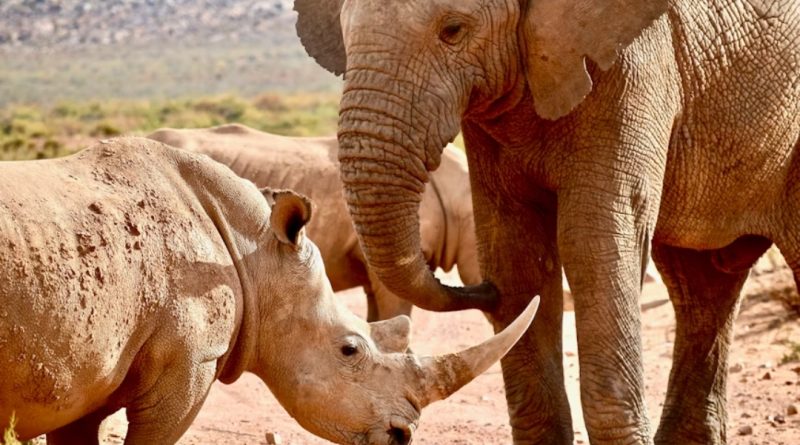WILD TRAFFICKING: 4,000 species affected despite efforts by UNODC to curb menace
Oru Leonard
The UN Office on Drugs and Crime’s (UNODC), new World Wildlife Crime Report has disclosed that despite two decades of concerted action, wildlife trafficking persists worldwide with more than 4,000 species affected.
However UNODC also reported positive signs in reducing trafficking impacts for some iconic species like elephants and rhinoceros, the organization said wildlife trafficking overall has not been substantially reduced over two decades.
A statement made available to News Dot Africa by UNODC Communications Office in Nigeria recommended that more consistent enforcement to tackle both supply and demand, effective implementation of legislation, including anti-corruption laws, and stronger monitoring and research are needed.
“Wildlife crime inflicts untold harm upon nature, and it also jeopardizes livelihoods, public health, good governance and our planet’s ability to fight climate change,” said Ghada Waly, UNODC Executive Director. “To address this crime, we must match the adaptability and agility of the illegal wildlife trade. This demands strong, targeted interventions at both the demand and the supply side of the trafficking chain, efforts to reduce criminal incentives and profits, and greater investment in data, analysis, and monitoring capacities.”
UNODC explained keys issues to be noted in the third edition of the World Wildlife Crime Report and examines trends, harms, impacts and drivers of the trafficking of protected wildlife species; evaluates the effectiveness of interventions to combat the trade; and provides policy recommendations.
The scale and harms of wildlife crime
The global scope and scale of wildlife crime remain substantial, the report finds, with seizures during 2015–2021 indicating an illegal trade in 162 countries and territories affecting around 4,000 plant and animal species. Approximately 3,250 of these species are listed in the Convention on International Trade in Endangered Species of Wild Fauna and Flora (CITES).

However, some of the species worse affected – like rare orchids, succulents, reptiles, fish, birds and mammals – receive little public attention, though wildlife trafficking appears to have played a major role in their local or global extinctions.
Beyond the direct threat to the population of species posed by wildlife trafficking, the crime can also disrupt delicate ecosystems and their functions and processes – including their ability to help stabilize the climate and mitigate climate change.
Wildlife crime also threatens the socioeconomic benefits people derive from nature, including as a source of income, employment, food, medicine, culture, and more. It further corrodes good governance and the rule of law through corruption, money-laundering and illicit financial flows.
How traffickers operate
Wildlife crime is interconnected with the activities of large and powerful organized crime groups operating in some of the world’s most fragile and diverse ecosystems, from the Amazon to the Golden Triangle.
The report notes that transnational organized crime groups are active in various roles along the trade chain, including export, import, brokering, storage, keeping and breeding live specimens or handling the interface with processors. Traffickers exploit inconsistencies and weaknesses in regulation and enforcement, adapting their methods and routes continuously to evade detection and prosecution.
Corruption plays a key role in undermining regulation and enforcement actions against wildlife trade, yet wildlife crime cases are seldom prosecuted through corruption offences. More focus could be placed on prosecuting wildlife traffickers under anti-corruption laws, the report notes, which often offer enhanced investigative powers and higher penalties than those under environmental legislation.
Progress and looking ahead
Recent analyses for two iconic species, elephants and rhinoceros, demonstrate that a combination of efforts from both the demand and supply side – when coupled with high-profile policy attention, stricter market restrictions and the targeting of high-level traffickers by law enforcement – have yielded positive outcomes. Over the past decade, poaching, seizure levels and market prices have declined solidly for commodities from both species.
In order to sustain and expand upon this progress, however, the report states that the quality and coverage of wildlife seizure data must be enhanced, both geographically and in terms of species involved. More and better investment is needed to build data and analytical capacity at the national and international levels.
Continuous investment in monitoring and analyzing emerging trends in illegal wildlife markets and associated criminal activity, meanwhile, is crucial for adapting and improving responses to wildlife trafficking.
Cover Photo Credit: u splash.com




